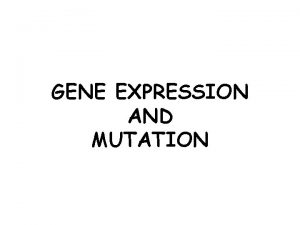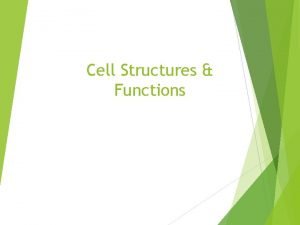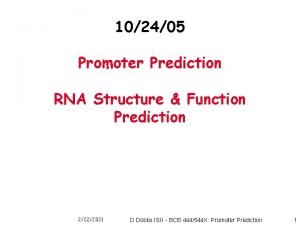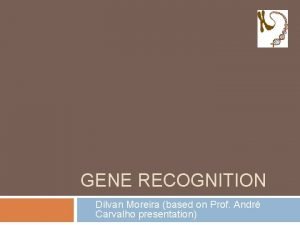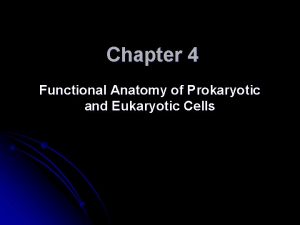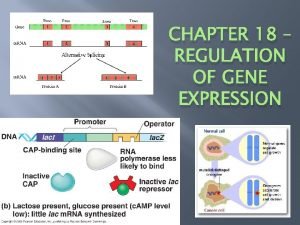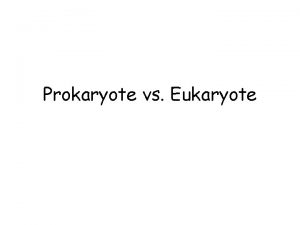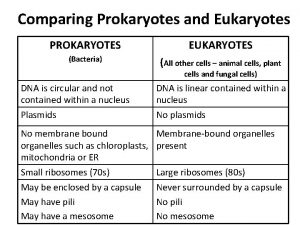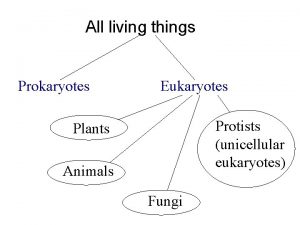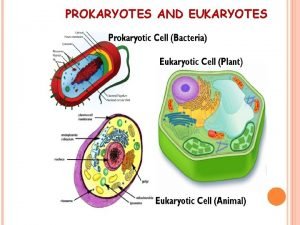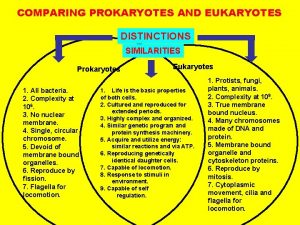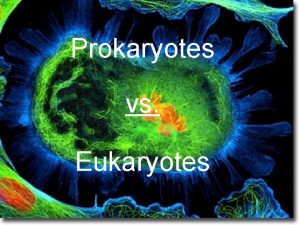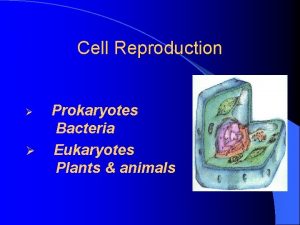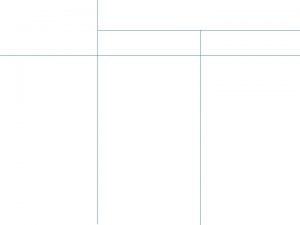DNA and Genes Prokaryotes VS Eukaryotes Prokaryotes no













- Slides: 13

DNA and Genes

Prokaryotes VS Eukaryotes • Prokaryotes: no defined nucleus and a simplified internal structure • Eukaryotes: membrane limited nucleus and complicated internal structure

• Genetic material is located in nucleus • The genetic information is stored in Deoxyribonucleic acid, DNA • DNA contains the information needed to build an individual

What is DNA needed for? • Genetic information is copied from DNA and converted to protein • RNA molecules work as messengers that carry the info to the ribosomes. • Proteins are the biological workers.

DNA (Deoxyribo Nucleic Acid) DNA is two long chains of Nucleotides • A Nucleotide consists of: • A phosphate Group • A five carbon sugar (deoxyribose) • A Nitrogenous Base

DNA • The sides of the DNA strand are the connection of the Phosphates to the Sugars. • Each Phosphate is connected to deoxyribose by a covalent bond.

DNA • There are four bases that make up the “rungs” of the ladder • Adenine • Guanine • Cytosine • Thymine

Four bases. . . Each of the four bases has a specific shape. Purine bases • Adenine and Guanine • Two carbon rings Pyrimidine bases • Thymine and Cytosine • A single carbon ring A two carbon ring can only attach to a single carbon ring.

DNA • Each base pair is held together by a hydrogen a couple of hydrogen bonds.

Base Pairing Rule • Adenine only pairs with Thymine and Cytosine only pairs with Guanine. • They are called complimentary base pairs.

DNA Molecules • Two polynucleotide chains are joined • Double helix, twisted in right handed way • Full circle in every 10 bases

The Genetic Code • Describes how nucleotide sequence is converted to protein sequence • Unit of three nucleotides = a codon • A codon codes for a specific amino acid (structural component of protein)

 Diff between prokaryotes and eukaryotes
Diff between prokaryotes and eukaryotes Prokaryotes and eukaryotes
Prokaryotes and eukaryotes Diff between prokaryotes and eukaryotes
Diff between prokaryotes and eukaryotes Multiple choice questions on prokaryotes and eukaryotes
Multiple choice questions on prokaryotes and eukaryotes Gene prediction in prokaryotes and eukaryotes
Gene prediction in prokaryotes and eukaryotes Gene expression in prokaryotes and eukaryotes
Gene expression in prokaryotes and eukaryotes Polimerase
Polimerase Prokaryotic vs eukaryotic cells
Prokaryotic vs eukaryotic cells Functional anatomy of prokaryotic and eukaryotic cells
Functional anatomy of prokaryotic and eukaryotic cells Prokaryotic promoter vs eukaryotic promoter
Prokaryotic promoter vs eukaryotic promoter Prokaryotes vs eukaryotes gene regulation
Prokaryotes vs eukaryotes gene regulation Venn diagram of plant and animal cells
Venn diagram of plant and animal cells What is eukarya
What is eukarya Prokaryotes vs eukaryotes
Prokaryotes vs eukaryotes
